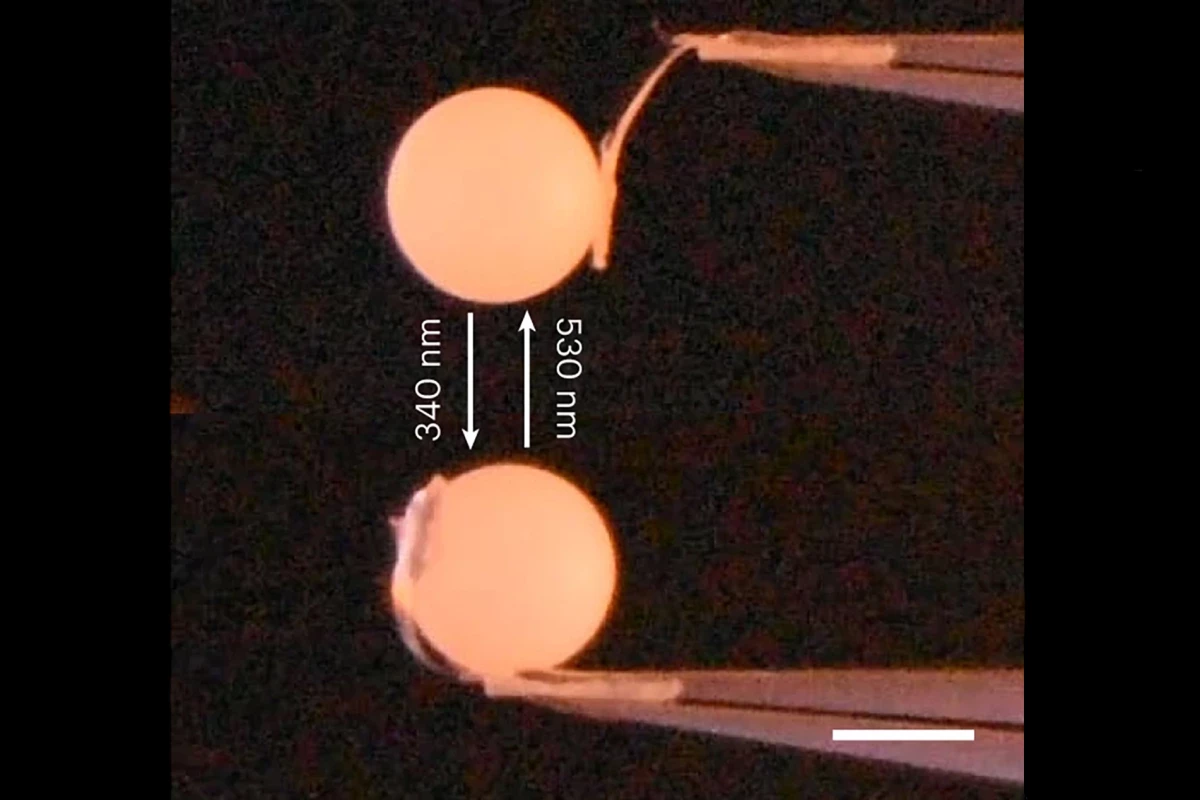Researchers have developed a novel material using tiny organic crystals that convert light into a substantial mechanical force able to lift 1,000 times its own mass. Without the need for heat or electricity, the photomechanical material could one day drive wireless, remote-controlled systems that power robots and vehicles.
Photomechanical materials are designed to transform light directly into mechanical force. They result from a complex interplay between photochemistry, polymer chemistry, physics, mechanics, optics, and engineering. Photomechanical actuators, the part of a machine that helps achieve physical movements, are gaining popularity because external control can be achieved simply by manipulating light conditions.
Researchers from the University of Colorado, Boulder, have taken the next step in the development of photomechanical materials, creating a tiny organic crystal array that bends and lifts objects much heavier than itself.
“We cut out the middle man, so to speak, and take light energy and turn it directly into mechanical deformation,” said Ryan Hayward, the study’s corresponding author.
A problem with photochemical materials is harnessing molecular-level motions to generate a large-scale mechanical response, which typically requires reactive molecules to be organized so they all push in the same direction. This is commonly achieved by using an ordered host material such as a liquid crystal polymer or using ordered self-assembly of molecules into a crystal.
The researchers wanted to avoid the issues seen with previous photomechanical materials using crystalline solids that change shape in response to a photochemical reaction: they often cracked when exposed to light and were challenging to process into useful actuators. So, they used arrays of tiny organic diarylethene-derived crystals as the photoactive component, set within a polymer material (polyethylene terephthalate, PET) with micron-sized pores.
As the crystals grew within the pores, their durability and energy production, when exposed to light, were enhanced significantly. Moreover, constraining the photomechanical crystals within the pores prevented them fracturing upon light exposure. The composite material could be bent to 180° without breaking or sacrificing its photomechanical response and underwent reversible bending and unbending when alternating between UV and visible light. And the crystals were able to convert light into mechanical work without heat or electricity.
The researchers moved on to weight-lifting experiments to see how much the photomechanical crystals could lift. They found that when the crystals changed shape with a load attached, they acted like an actuator and moved the load. The 0.02-mg crystal array was able to lift a 20-mg nylon ball – that’s 1,000 times its own mass.
“What’s exciting is that these new actuators are much better than the ones we had before,” Hayward said. “They respond quickly, last a long time and can lift heavy things.”
The researchers say the flexibility and ease of shaping makes the photochemical material useable in a range of applications, such as replacing electrically wired actuators in robots and vehicles or powering drones by laser beams instead of a bulky battery. But the researchers have some more work to do first.
Going forward, they’re aiming to achieve greater control over the material’s movement, which, at present, can only go from a flat to a curved state by bending and unbending. They also hope to increase efficiency, maximizing the amount of mechanical energy produced compared to light energy input.
“We still have a ways to go, particularly in terms of efficiency, before these materials can really compete with existing actuators,” said Hayward. “But this study is an important step in the right direction and gives us a roadmap for how we might be able to get there in the coming years.”
The study was published in the journal Nature Materials.
Source: University of Colorado Boulder
Editor's Note (22 Aug. 2023): This article originally stated the material was "able to lift 10,000 times its own mass." It should have read, "1,000 times its own mass." We sincerely apologize for the error, which has now been corrected.





